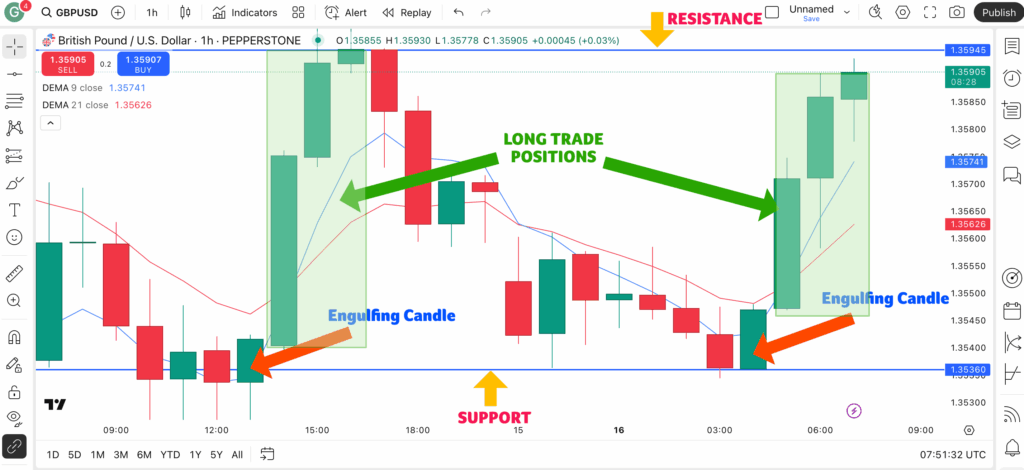
Price action trading is a popular strategy that relies on analyzing historical price movements to predict future market behavior. But how accurate is it? The answer depends on skill, market conditions, and execution quality. When combined with tools like TradingView for charting and a reliable broker like Pepperstone (known for tight spreads and fast execution), price action can be highly effective—but it’s not foolproof.
Key Insights on Price Action Trading Accuracy
- Works Best in Trending Markets – Price action signals (e.g., pin bars, engulfing patterns) are more reliable in strong trends than in choppy, sideways markets.
- Requires Confirmation – A single candlestick pattern isn’t enough. Traders should use support/resistance levels or moving averages for validation.
- Session Timing Matters – Overlaps (e.g., London-New York) increase liquidity, improving signal accuracy. Scalpers often focus on these periods.
- Avoid High-Impact News – Economic events (like NFP) cause erratic price spikes, making pure price action risky. Tools like Pepperstone’s economic calendar help avoid these traps.
- Broker Execution Impacts Results – Slippage and wide spreads (common with some brokers) can distort entries/exits. Pepperstone and IC Markets offer strong execution for price action traders.
- Combine with Volume Analysis – Volume confirms price moves. Platforms like TradingView provide volume indicators to strengthen analysis.
- Psychological Discipline is Key – Over-trading or ignoring stop-losses ruins even the best setups. Stick to tested rules.
FAQs: Price Action Trading
Does price action work on all timeframes, or just higher ones?
It works on all timeframes, but higher ones (H4/Daily) reduce noise and false signals.
Which forex pairs are best for price action strategies?
Major pairs like EUR/USD and GBP/USD (high liquidity, clear trends) are ideal.
How do I avoid fakeouts when trading breakouts with price action?
Wait for a close beyond the level and check for supporting volume or momentum indicators.
Can price action be automated, or is it only manual?
It’s mostly manual since it relies on visual patterns, but some traders code approximations using algorithms.
Final Thoughts
Price action trading is a powerful strategy, but its accuracy depends on market context, trader skill, and execution quality. Pairing it with TradingView’s advanced charts and a low-latency broker like Pepperstone (or IC Markets for raw spreads) maximizes its potential.
Whether you’re scalping or swing trading, mastering price action can give you a decisive edge—if you trade smartly.
Looking for a broker with tight spreads and TradingView integration? Try Pepperstone or explore FP Markets for competitive pricing.
